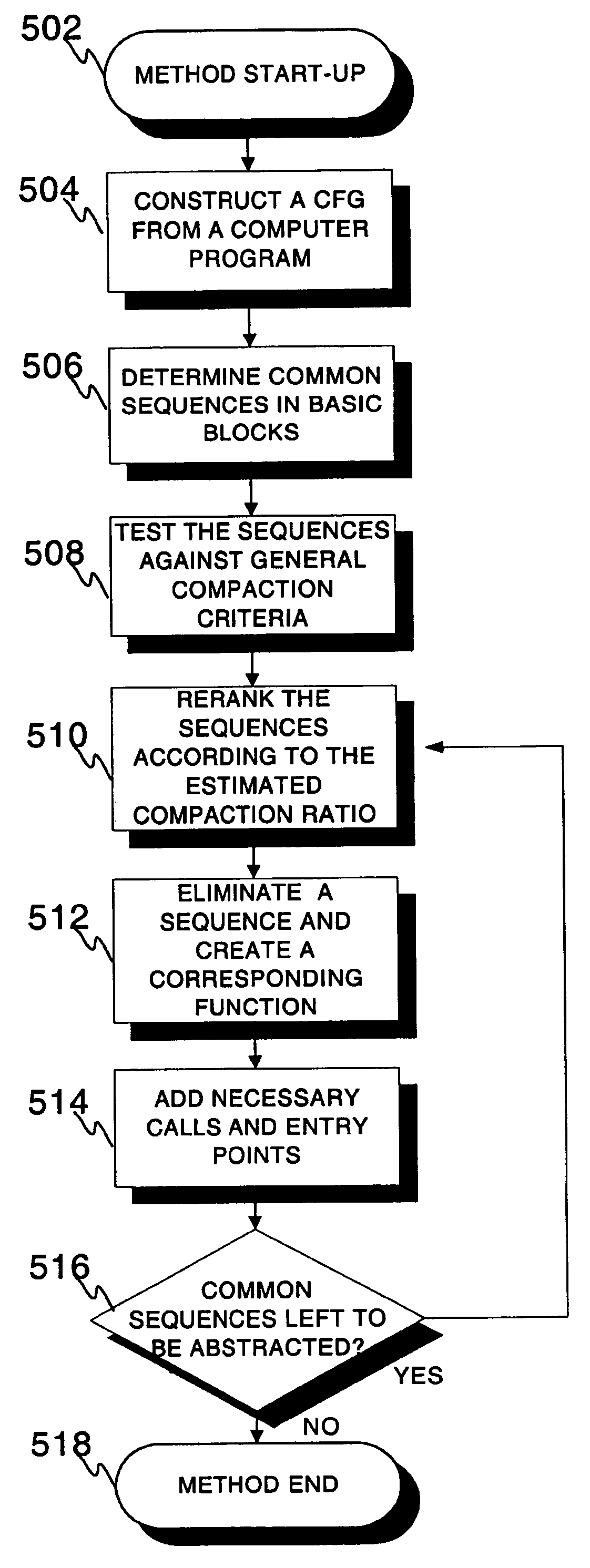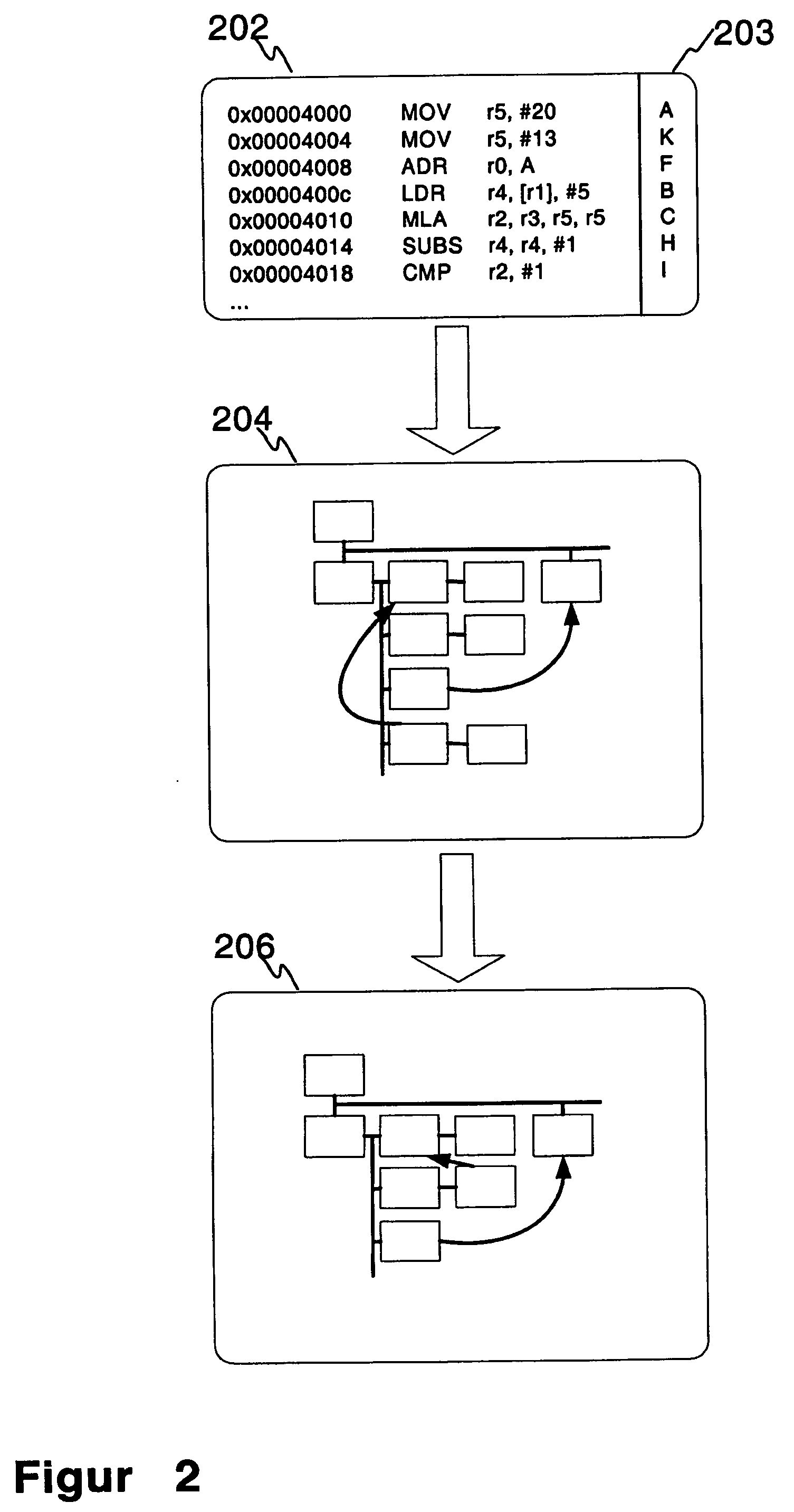Method and a device for abstracting instruction sequences with tail merging
a technology of instruction sequence and tail merge, applied in the field of software engineering, can solve the problems of incorporating model and worse than could be achieved compaction, and achieve the effect of improving code compression ratio, reasonable time complexity of algorithm, and improving code compression ratio
- Summary
- Abstract
- Description
- Claims
- Application Information
AI Technical Summary
Benefits of technology
Problems solved by technology
Method used
Image
Examples
Embodiment Construction
[0027]FIG. 1 was already discussed in conjunction with the description of related prior art. FIG. 2 discloses, by way of example, the concept of the invention in general. An executable program, which is printed as displayed on e.g. a debugger user interface, 202 is first analysed using known techniques in order to obtain a CFG 204 of the program structure and flow thereof. Next the CFG is exposed to the procedural abstraction method of the invention, which results in a modified CFG structure 206 with identical instruction sequences extracted from their original positions and placed a function call instead to a separate function including the corresponding sequence only once. The newly created function may then include a plurality of entry points for different caller functions' use. The figure also includes character symbols, see legend 203, attached to instructions as an additional instruction identification, and are only used in order to facilitate an understanding of the following...
PUM
 Login to View More
Login to View More Abstract
Description
Claims
Application Information
 Login to View More
Login to View More - R&D
- Intellectual Property
- Life Sciences
- Materials
- Tech Scout
- Unparalleled Data Quality
- Higher Quality Content
- 60% Fewer Hallucinations
Browse by: Latest US Patents, China's latest patents, Technical Efficacy Thesaurus, Application Domain, Technology Topic, Popular Technical Reports.
© 2025 PatSnap. All rights reserved.Legal|Privacy policy|Modern Slavery Act Transparency Statement|Sitemap|About US| Contact US: help@patsnap.com



